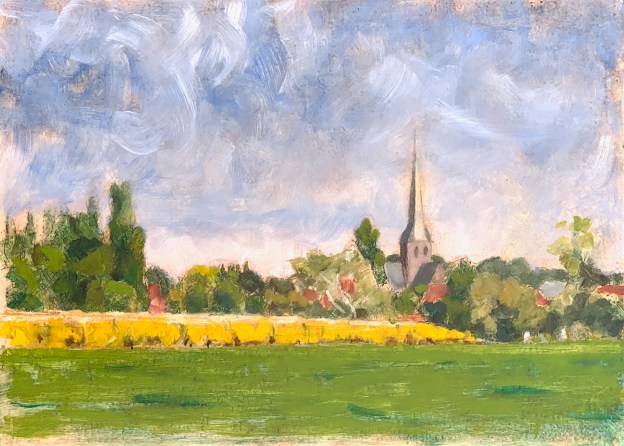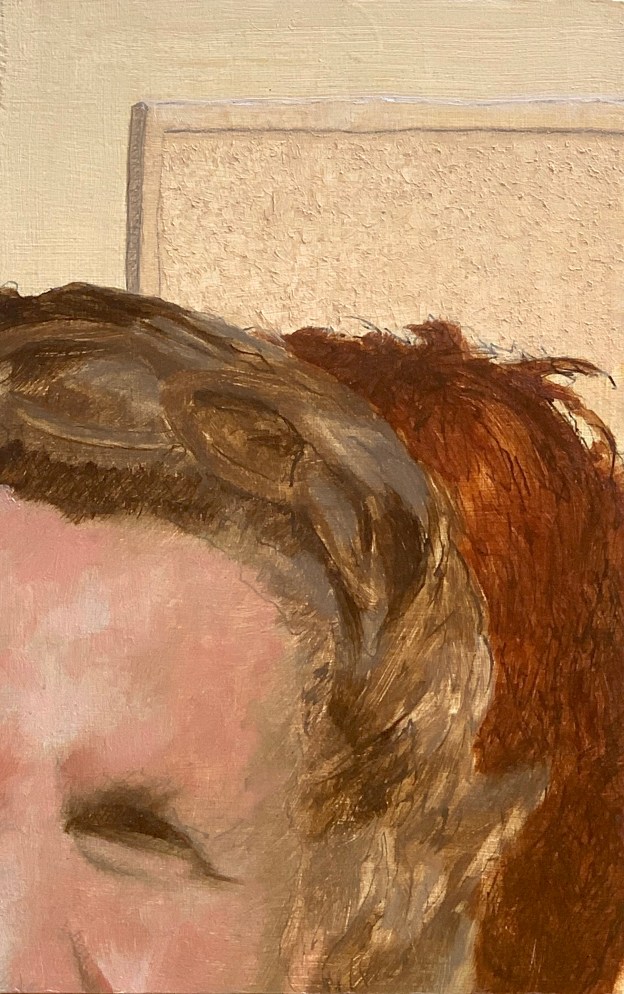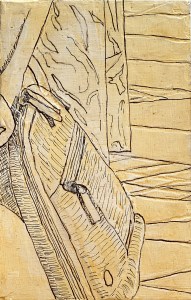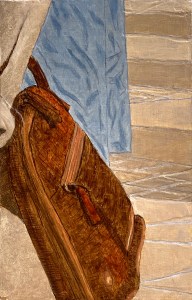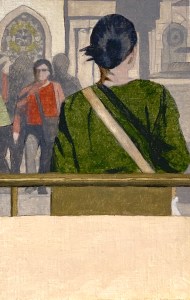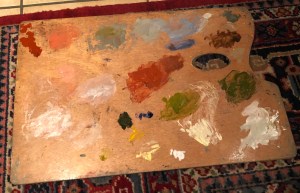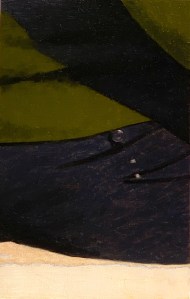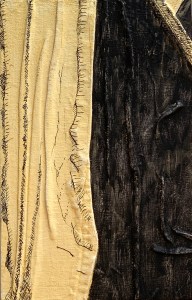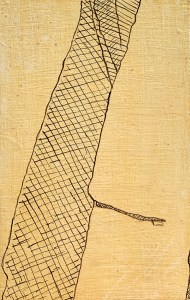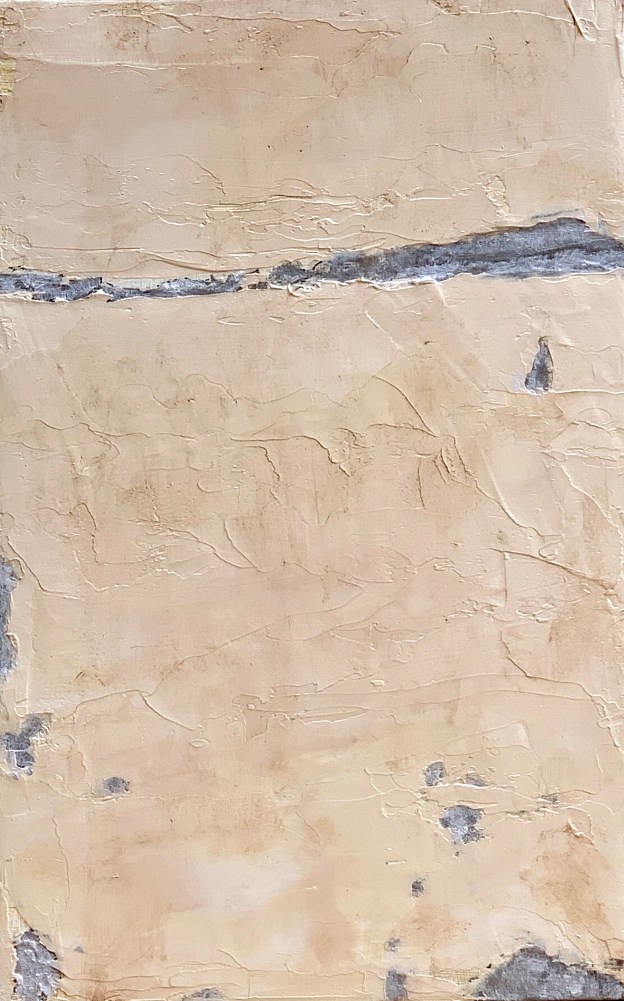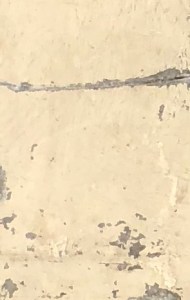
Vivenkapelle. September 2023. Oil on panel. 9 x 12 Inches or 23 x 32 cm.
I biked out yesterday, late afternoon, to my current favourite spot along the Legeweg outside of Bruges. Besides my light-weight field easel and folding chair, I was equipped with brushes, an apron, painting rags, oils and my three small bottles of potions (medium, emulsion and turps). This was intended to be my second and (hopefully) final en-plein-air painting session of Vivenkapelle.
I had completed a watercolour there in late August. I liked it well enough to decide to attempt an oil of the same view. So back at home I had transferred the design to a true-gesso panel and worked it up in silverpoint (Ohhh, I love silverpoint). But then, because I knew from experience that the silverpoint becomes increasingly difficult to discern under subsequent layers of oil, I enhanced the stronger valued areas with some fine-tipped lines of india ink.

Vivenkapelle. First session. Early September.
In early September I ventured out with my design and my abbreviated field equipment (as described above). It had been more than ten years since I had tried to paint en plein air in oils(!!!). In fact (for numerous reasons) I had kinda given up on it. So this time I truly felt las though I had nothing to lose (which for artistic creation is a very good place to be). In addition, I had decided to try out a new recipe for my emulsion (one whole egg instead of the usual methyl-cellulse glue component). The first session went OK. I blocked in the main shapes and colours. But it all dried so fast (too much egg white in the emulsion!). Nevertheless, I was glad to get something down and was hopeful that the painting could be concluded before the weather changed and/or the corn got mowed.
Three weeks later I tried my luck (hooray! the corn was still there!). This time I adjusted my emulsion recipe to include just the yolk of one egg, deleting the watery white. It had the effect I was looking for: it allowed the wet oil strokes to stick to the substrate/ground (which had been lightly-covered-and-wiped-with-medium) as well as allowing the wet strokes to retain their integrity when gently dry brushed. In this way, the perennial smearing, smudging, dirty-colour problem of oil painting can (for the most part) be avoided! I already knew that whenever small corrections needed to be made, a small dry brush dipped in medium can function like an eraser, allowing the corrected stroke to be placed on top (and dry brushed in as needed).
Because I was painting over an underpainting, the decisions I had to make were greatly reduced. (Hooray!!!) Also, all those previous decisions enhanced the further development of the image. With the scene in front of me, I kept to my original mind’s-eye image, playing back and forth between the two. The cows stopped by to say hello. A number of passers-by, too. The evening lengthened. Weather-wise I was in luck; it was full-on Indian Summer glory. After approximately two hours, I was done: not too much; not too little; just right. Perhaps just enough to invite the viewer to join in the dance.
